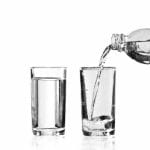Even the best tasting tap water in America is contaminated with a host of pollutants, many of which could increase your risk of serious health problems.
Here are some of the common contaminants found in tap water, and how they could negatively impact your health:
Arsenic – This poisonous element is a powerful carcinogenic, which has been linked to an increased risk of the development of several types of cancer. Unfortunately, the level of arsenic in US tap water is incredibly high. According to the Natural Resources Defense Council, as many as 56 million Americans in 25 states are drinking tap water with unsafe arsenic levels.
Aluminum – Did you know that high levels of aluminum consumption can increase your risk for Alzheimer’s disease? But that’s not all. The aluminum found in municipal drinking water can cause a wide range of other health problems, including learning disabilities, skin problems, gastrointestinal disease, liver disease and Parkinson’s disease.
Fluoride – Some people still believe that higher levels of fluoride in drinking water can prevent cavities and strengthens teeth. However, fluoride is anything but a cavity fighter. It is a well-known toxin that can lead to more tooth decay and a host of other immune system deficiencies.
Disinfection Byproducts (DBPs) – Most community water supplies are treated with chlorine, but this is not the healthiest element for human consumption. Disinfection byproducts occur in water that has been treated with chlorine, and these are far more dangerous than the chlorine itself. In addition to being powerful carcinogens, DBPs have been linked to nervous system disorders, kidney and liver problems.
Is bottled water the best choice?
Not always. About 40 percent of bottled water is nothing more than filtered tap water, and drinking water from plastic bottles is never a good idea. Plastic bottles contain bisphenol A, or BPA, which is a known hormone disruptor. BPA has been linked to prostate and breast cancer, altered immune system function and early puberty in both genders. Plus, the staggering number of discarded plastic bottles in landfills is having a devastating effect on our ecosystem.
Filtered tap water is best
The most economical and environmentally sound choice you and your family can make is to purchase and install a water filter for your home. Below is a list of three different types of water filters that may be the ideal fit for your lifestyle.
Ion Exchange Filter
Ion exchange is designed to remove dissolved salts in the water, such as calcium. This system actually softens the water or exchanges natural-forming mineral ions in the water with its own ions, thereby neutralizing their harmful effect of creating scale build-up.
The ion exchange system was originally used in boilers and other industrial situations before becoming popular in home purifying units, which usually combine the system with carbon for greater effectiveness.
Reverse Osmosis Filter
In addition to removing chlorine, inorganic, and organic contaminants in your water, an RO filter will also remove about 80 percent of the fluoride and most DPBs. The major drawback is the expense of installing an RO filter as most need a plumber to get up and running.
Granular Carbon and Carbon Block Filters
These are the most common types of counter top and under counter water filters. Granular carbon filters and carbon block systems perform the same process of contaminant removal, adsorption, which is the chemical or physical bond of a contaminant to the surface of the filter media.
Granular activated carbon is recognized by the EPA as the best available technology for the removal of organic chemicals like herbicides, pesticides and industrial chemicals. However, one of the downfalls of granular carbon filters is that the loose material inside can channel–the water creates pathways through the carbon material, escaping filtering.
Carbon block filters offer the same superior filtering ability but are compressed with the carbon medium in a solid form. This eliminates channeling and gives the ability to precisely combine multiple media in a sub-micron filter cartridge. By combining different media, the ability to selectively remove a wide range of contaminants can be achieved.
Ideally, you want a filtration system that offers a variety of methods to remove different contaminants. Most systems do not address a combination of organic, inorganic, cyst, sediment and metals.
Photo Courtesy of Idea Go / FreeDigitalPhotos.net





